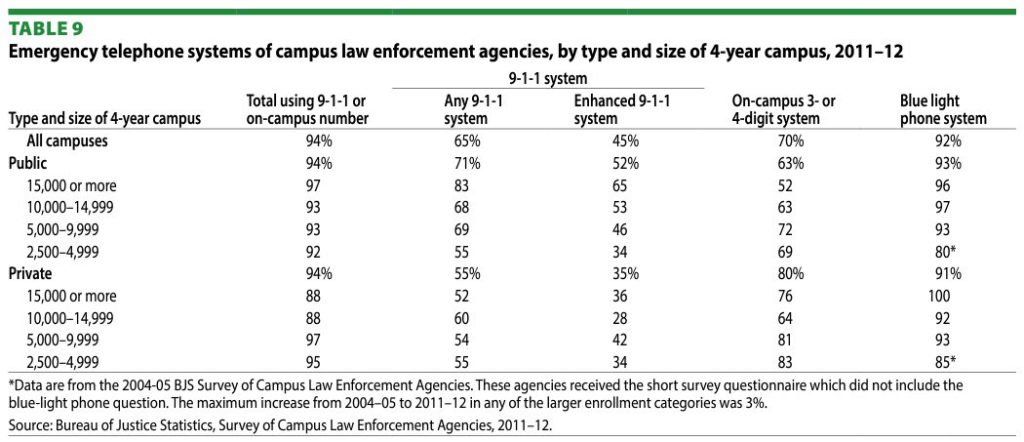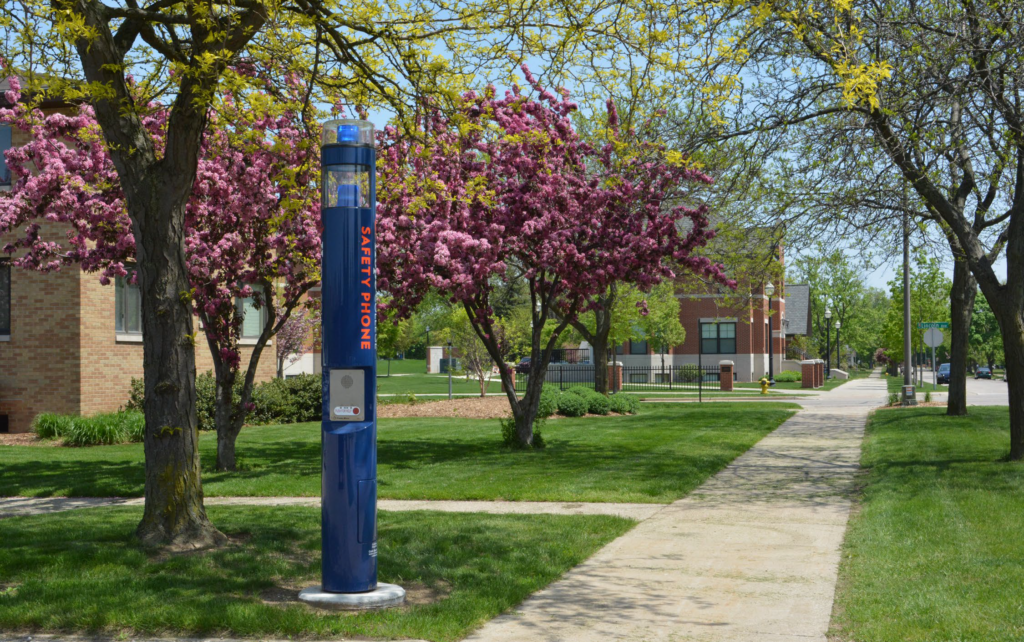
Introduction
This Code Blue Ask The Experts article examines issues and considerations for officials grappling with improving campus communications and safety. Student perspectives on campus safety are all-encompassing and complex. One of the most prominent aspects of campus safety for students is focusing on blue-light emergency phones.
Safety Concerns
Code Blue has over three decades of experience in campus and community safety. As the market leader for End-to-End Help Point Telecommunication solutions (including blue light emergency phones), we pride ourselves on listening to our customers.
Students’ ranking concerns vary depending on campus size, location, safety, and security (what is in place—process and technology). Generally, when addressing the prevailing social, crime, community, and threat environments, Code Blue’s front lines constantly hear from students about their primary concerns.
- Walking alone, especially at dusk and nighttime
- Unlit or improperly lit pathways
- Excessive drinking and resulting crime
- Theft (burglary)
- Robbery
- Sexual assault
- Better security presence
These concerns can be managed by implementing blue-light emergency phones and automated communication solutions.
A Baseline
The last time the US Department of Justice issued findings in a Special Report on Campus Law Enforcement, 92% of university campuses and 100% of private schools with more than 15,000 students had blue-light emergency phones. These systems are genuinely iconic solutions, and students have an instinctual knowledge of engagement—almost like seeing a traffic light and understanding the signals.

Contradictions
Some campus authorities have reported declining usage of blue-light emergency phones over the years, and this is a good sign that the solutions are doing their job when needed. They are helping to make campus safety more effective by increasing the presence and perception of security and deterring crimes.
In contrast, several campus officials are considering short-term price over long-term cost when it comes to keeping their blue light emergency phones in proper operational condition (which, as with any great system, requires testing, maintenance, and repair).
Although rare, specific campuses are looking to remove blue-light emergency phones altogether, and these incidents drive revolt and protest from students in general.
Cell phones are touted as an easy answer in opposition to blue-light emergency phones. Still, there is no such thing as an easy answer regarding safety in a campus environment. This “OR” approach reveals a complete lack of understanding of cell phone strengths and weaknesses.
Students Rise to the Occasion
This year, the Associated Students University California, Student Safety Task Force, UC Berkeley announced that the ASUC and campus leaders partnered to plan the implementation of additional blue-light emergency phones. They said that the phones can be used in emergencies to contact the University of California Police Department (UCPD) or Campus Mobile Crisis Response (CMCR).
According to Change.org, a student-initiated petition acquired over 25,000 votes to plead with officials to install emergency blue lights on the University of Georgia’s Campus this year. The students obtained a victorious outcome. The petition originator wrote – (excerpts) Why this petition matters.
As a female student at the University of Georgia, I am deeply heartbroken and alarmed by the recent murder that occurred on our campus. This tragic event happened in a park where many women, including myself, used to feel safe. The lack of emergency blue lights has been an ongoing issue that can no longer be ignored. These lights can instantly contact the police and make them aware of a dangerous situation. They can also deter crimes.”

Please Don’t Take Away My Blue Light Phones
Students typically fight universities that take away blue-light emergency phones, advocating to have them put back. However, blue-light emergency phones are here to stay. Research shows blue light emergency phones help deter crimes, and students and parents still want the technology on campus.
Lighting
Referring back to Code Blue’s focus group program, many students expressed the need for much better lighting as a top concern.
For Code Blue customers, lighting can be an integrated function, and in addition to pathway lighting, beacons and strobe lights can be automatically activated.
Through software integration, intelligent lighting can enhance students’ safety and peace of mind by illuminating pathways as they progress. It could be very bright at any point and dimmer behind and in front. This approach addresses safety and green environmental concerns as less energy is consumed.

The Bottom Line
Code Blue is always ready to help with any questions regarding our solutions. No one should feel like they are on an island. Together, we are a community dedicated to assisting public safety and saving lives!
We hope this article helped you better understand the issues and considerations for campus safety and blue-light emergency phones. Please consider contacting Code Blue for help (https://codeblue.com/contact) to make your Code Blue Solutions come to life!
